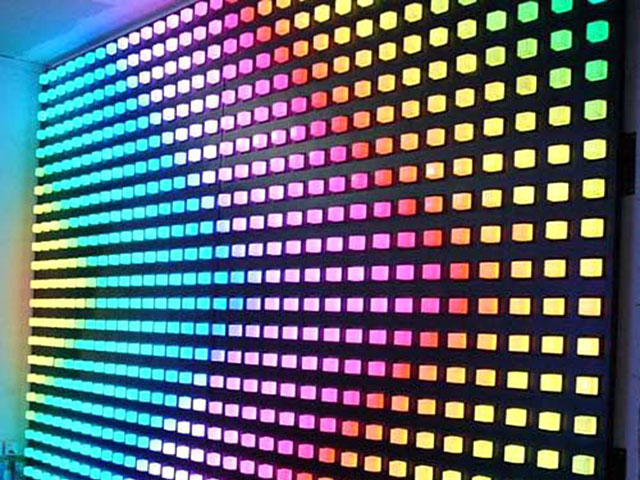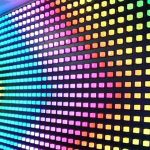In today’s rapidly evolving technological landscape, small pixel pitches LED displays find widespread application across various industries that demand professional image quality. Their claim to fame lies in their cutting-edge ultra-high-definition display technology.
Pixels, as the smallest display units on an LED screen, play a pivotal role in enhancing image clarity, making an impact on image details and color reproduction. The term “5G+4K/8K+AI” is related to the concepts of pixels and resolution.
what exactly differentiates 4K and 8K LED displays?
LED display manufacturers typically define 4K/8K in terms of point-to-point assembly. From a technical standpoint, 4K/8K LED displays today refer to the physical (horizontal) resolution of high-definition pixels that these screens can achieve when assembled.
Within LED screens in the market, the mainstream 4K resolution (including but not limited to 3840×2160) boasts 3840 horizontal pixels and 2160 vertical pixels; multiplying the two gives us the physical resolution we often. On the other hand, 8K resolution, in strict terms, represents ultra-high definition with typical resolutions like 7680×4320. Its horizontal and vertical pixel counts are twice that of 4K, resulting in four times the total pixel count of a 4K screen.
For ultra-high-definition small pixel pitch LED displays, smaller pixel pitch allows for easier meeting of market demands for 4K and 8K resolutions in display terminals. This ensures that the LED display quality remains comfortable for viewers, even when observed up close for extended periods, without a grainy appearance.
With the commercialization of 5G across various industries, IAMLEDWALL 4K LED video walls offer immersive visual experiences that meet the requirements for ultra-high-definition displays. They offer advantages such as high reliability, efficient heat dissipation, reduced noise, and significant energy savings, making them a preferred choice for large-scale broadcasting studios in many provinces.
Beyond the broadcasting industry, the fusion of 5G+4K/8K/AR applications extends to fields like smart healthcare, remote education, and command centers. These sectors also demand ultra-high resolutions, stability, low latency, and other critical functionalities.
While both 4K and 8K LED displays offer professional-grade image display advantages, these devices require both hardware support for full high-definition image output and high-quality source content to realize their potential. Relatively speaking, playing 8K video sources yields significantly superior display quality compared to 4K video sources.
Although there are currently fewer sources that match 4K or 8K resolutions, the growing maturity of 5G networks helps address the challenge of transmitting the massive data volumes required for 8K video content. This trend suggests that the future of end-to-end visual displays will inevitably gravitate toward high-definition 4K and even 8K resolutions. Thus, 5G+8K may become the mainstream application combination for screens larger than 100 inches.
In conclusion
LED displays has witnessed remarkable advancements with the introduction of 4K and 8K resolutions. These technologies have revolutionized image clarity and quality across diverse industries. As 5G networks continue to proliferate and the content ecosystem evolves, we can anticipate a future where 4K and 8K displays become the norm for delivering immersive, high-definition visual experiences in various professional applications.
These cutting technologies not only enhances the quality of visuals but also opens up new possibilities for industries like broadcasting, healthcare, education, and command centers. In this era of rapid technological advancement, staying updated with the latest developments in display technology is essential for businesses and individuals alike to get the full potential of ultra-high-definition displays.




